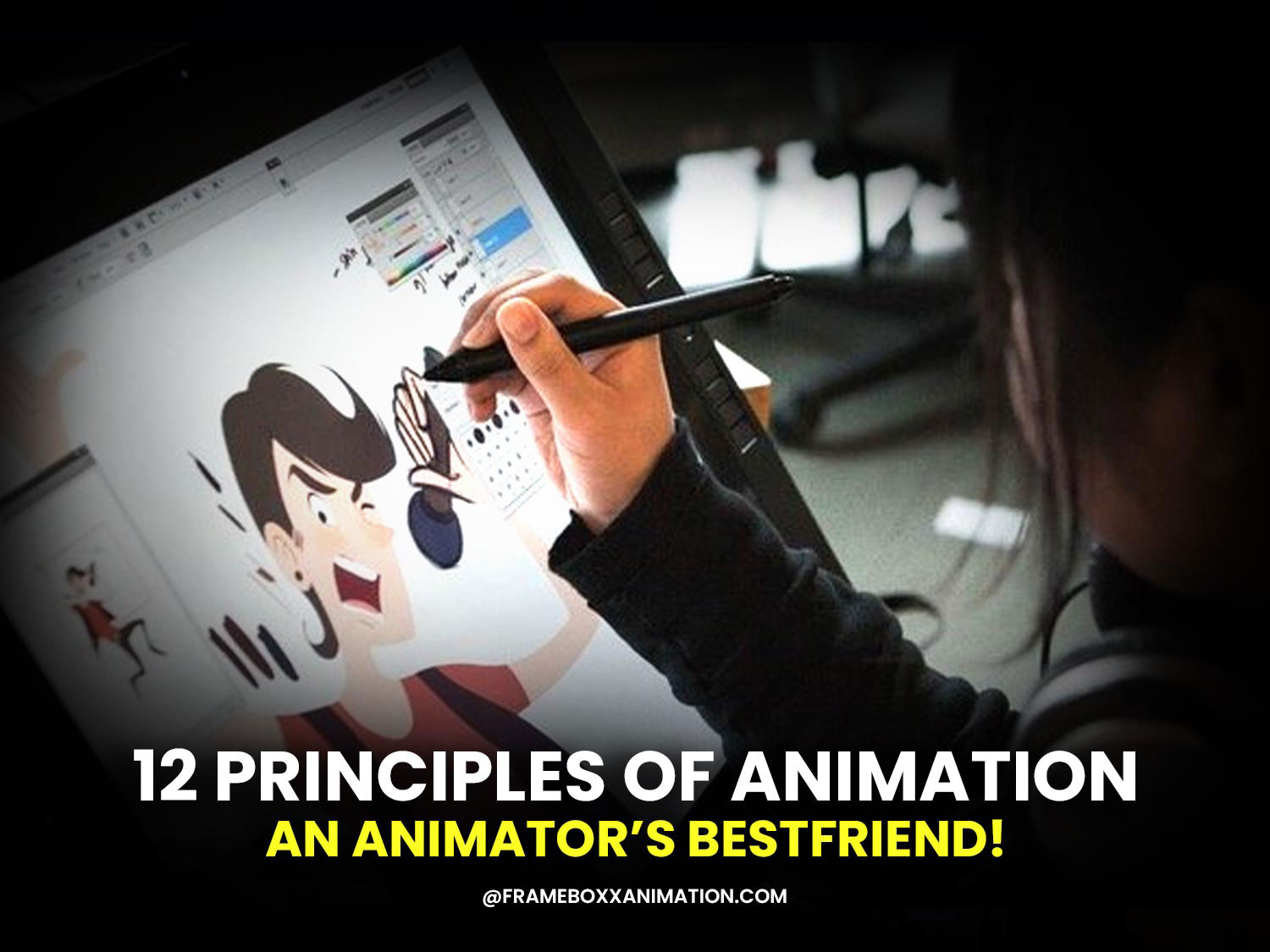Animation is a visual art form that has the power to bring characters and stories to life compelling way. Behind the magic of animation lies a set of fundamental principles. It guides animators in creating movements that look realistic, appealing, and engaging. In this article, I’ll explain 12 principles of animation that serve as the foundation of creating dynamic and visually stunning animations.
Before we continue to topic, let’s know a few quick facts about the entire animation industry. It is one of the booming- industries of today’s time. As a matter of fact, The global animation industry accounted for about USD 394.6 billion in the year 2022. With an increase of 6.5%, the industry is speculated to value USD 528.8 billion by the year 2030.
From the archaic times, when animation wasn’t much familiar, to stepping into the modern age of technology, Animation is a widely discussed and competitive topic.
As animators, we can very well feel the mixed feelings of breathing life into your own characters , watching them talk and act, sprawling from one scene to another. In the joy of creating, Let us share the best kept secret of animation industry professionals:
The 12 Principles of Animation
These principles serve as a stepping stone for flawless movements of our characters. The best part is that these principles are not limited to 2D animation, they very well stretch over 3D Animation too, we kid you not, even traditional animation is fairly based on these 12 Principles of Animation.
The 12 Principles of Animation are:
- Squash and Stretch
- Anticipation
- Timing
- Ease in and Ease out
- Exaggeration
- Secondary action
- Straight-ahead action and pose-to-pose
- Follow through and overlapping action
- Arc
- Staging
- Solid drawing
- Appeal
1) Squash and Stretch
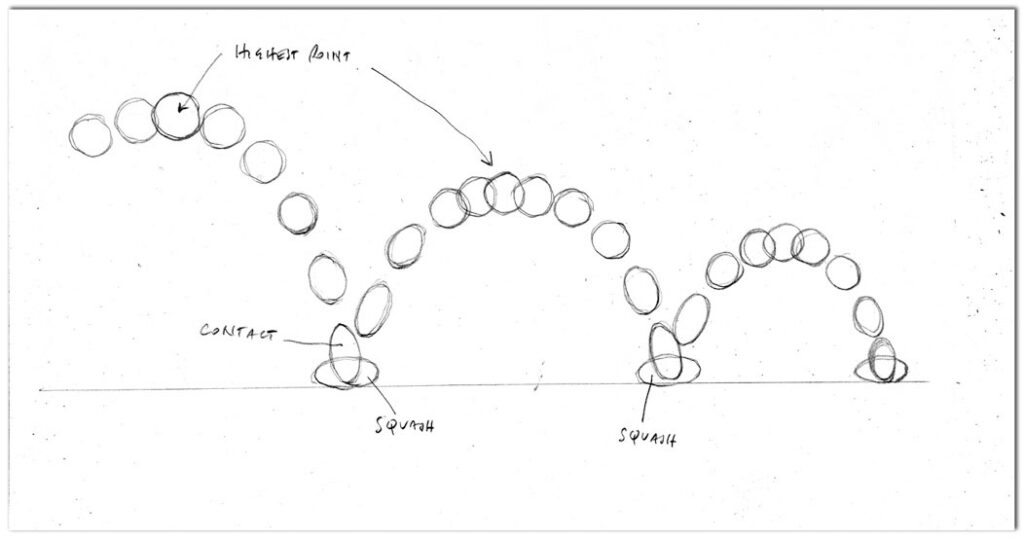
Squash and stretch are the most common phenomena in real life. Squashing is when an object collapses and changes shape. Contrastingly, stretching is when an object stretches its shapes to create the illusion of probable flexibility.
For example, in this animation, following the principle of squash and stretch, the ball when hitting the ground will squash just before it hits and stretch when it bounces back from the ground. As an animator, Try to observe the fundamental movements in real life. Try and notice how the face uses the principle of squash and stretch in the motion of expression.
2) Anticipation
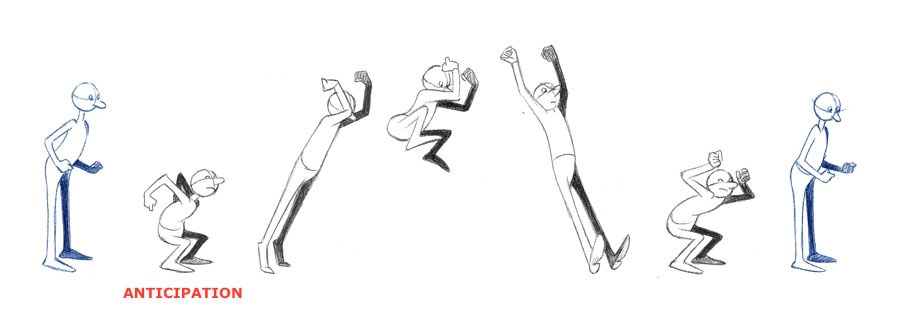
Anticipation is used to create believable real-life movements. So, if we are animating a figure to create an action in the scene. This principle comes in quite handy. Anticipation is when an object moves back to create enough energy/momentum to perform a certain action.
You must have noticed, a baller throwing a ball will move back and then run forward to generate enough momentum for the throw. When animating, we will need to animate our figure, starting from the back movement and then pushing forward for the action.
Observe and imitate the anticipated movement in your work.
3) Timing & Spacing
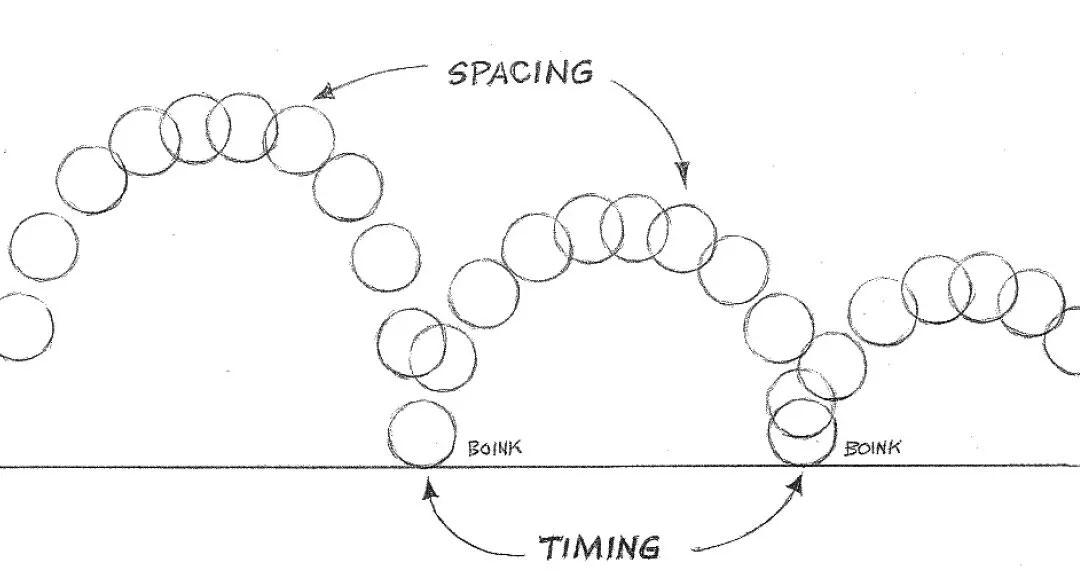
Timing is a massive determinant in the pacing of your animation. Animation is done in frames per second (commonly pronounced as fps). FPS is the rate of frames that make up one second of animation. The standard frame rate is 25 fps. Whereas, for a smoother animation, 30 fps is also used.
Timing is what gives the illusion of space and movement in animation. Timing refers to the spacing between 2 poses. The more spacing, the slower the movement, and vice versa.
Spacing is used to determine the flow of the animation. The more different the spaces are, the more jerky the animation will be. Whereas, the lesser the distance between each position, the smoother the animation.
4) Ease In & Ease Out

Ease in and ease out is used to create a smoother animation. When we animate, it’s common to witness a jerky animation. As a solution to the problem, easing in /out works out profoundly. Sometimes, the movements look robotic and unnatural. Easing in will ease the tightness of the action and beautifully contribute to the overall motion. Easing means “ Slowing”. For example, slowing in when the person lands on the ground to imitate a smoother landing.
5) Exaggeration

Exaggeration is used to push movements way further. This creates an intensity in the movement. Exaggerating the movements will increase the overall appeal in the animation. It is suggested to apply exaggeration to some degree depending on the style you’re going for.
Cartoons and Disney Animations are wonderful examples of exaggeration. Exaggerating the movements makes the work feel more cartoony and stylistic. Contrastingly, for real-life animations, the exaggerations can only be pushed to a certain degree before it look cartoony.
6) Secondary Action
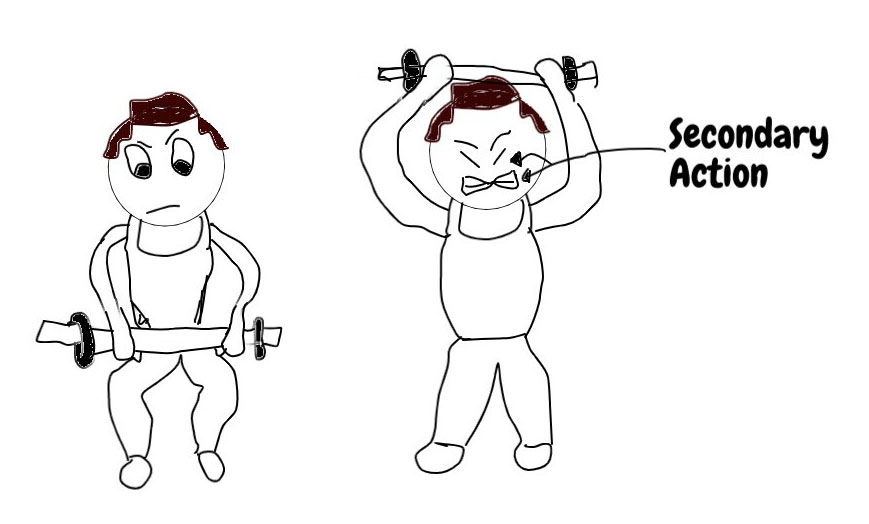
Secondary action refers to the additional movements happening in the scene. Any action that supports the main primary action will be called a secondary action. Secondary actions help in supporting the main primary action. They contribute to the overall movements and enhance interaction with the environment.
Example: Two characters are talking to each other in a room. Two of them talking would be the main action i.e. primary action. If one of them uses his arms to express something, that would be called a secondary action. In this case, it allowed us to connect with the character better. Additionally, it also made the movements look more natural and less robotic.
The 12 Principles of Animation serve as a ladder to the overall synchronous movements. Using these will definitely enhance the thorough output and quality of your work. Explaining all of the principles is beyond the scope of this blog, This blog is a great starting point on your animation journey.
Final Word
On a final note, We at Frameboxx Animation Institute encourage you to use these principles and experiment with how they align with your animation. Share your animations with us on instagram with a hashtag “#Ahmedabadkeframeboxxers”. If you are committed to accelerating your journey in Animation, Joining our courses will be the best possible choice for your career. Frameboxx provides Certificate, Degree, and Master Programs that can be customized according to your needs. Students from our institute have been placed in significant leading studios including Red Chillies, MPC, Double-Negative, and many more. Become a professional Animator with us.
For regular updates on our socials: Click here
Keep creating, frame by frame!
For more information on our courses:

